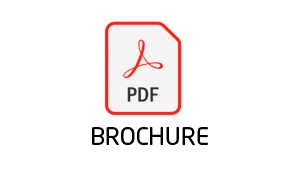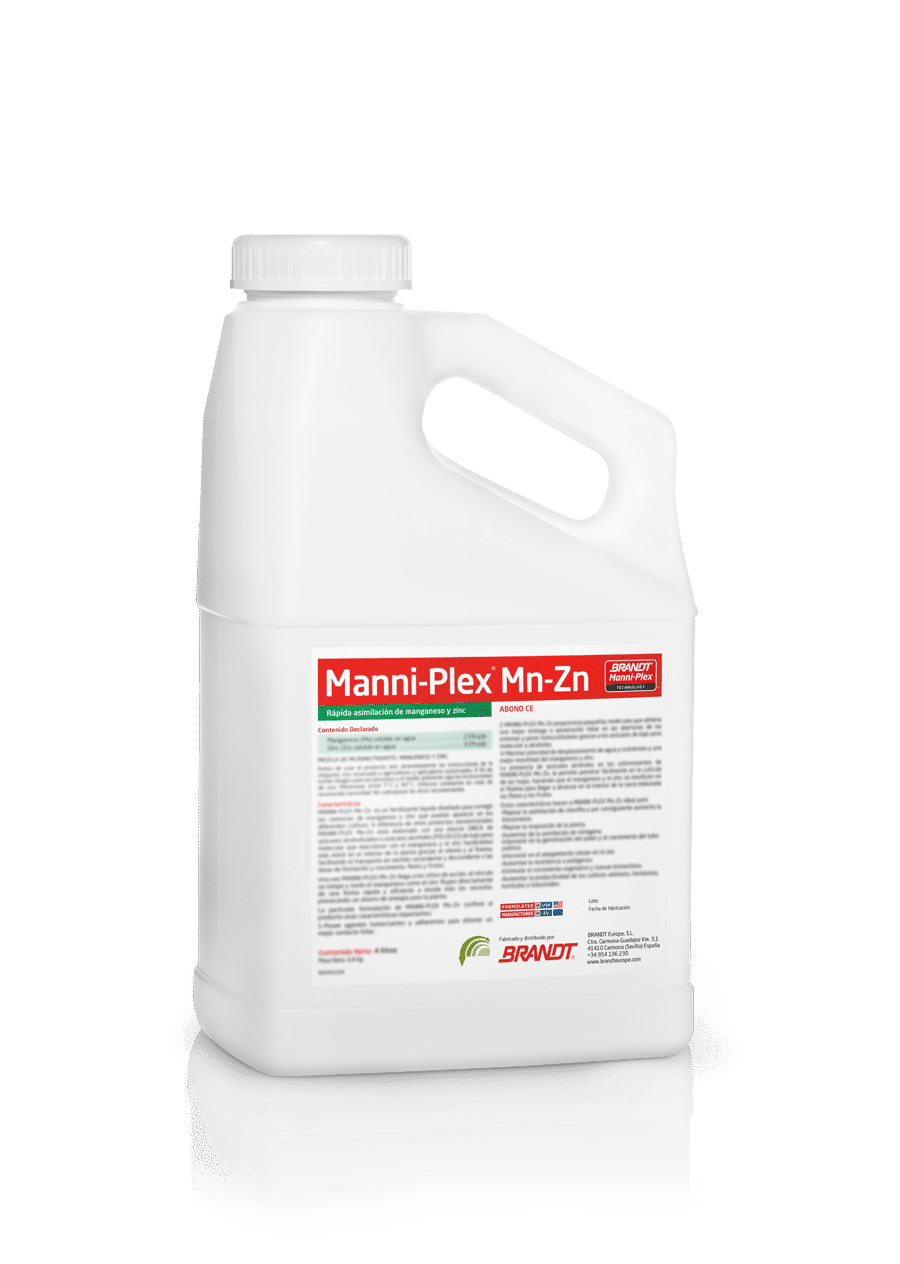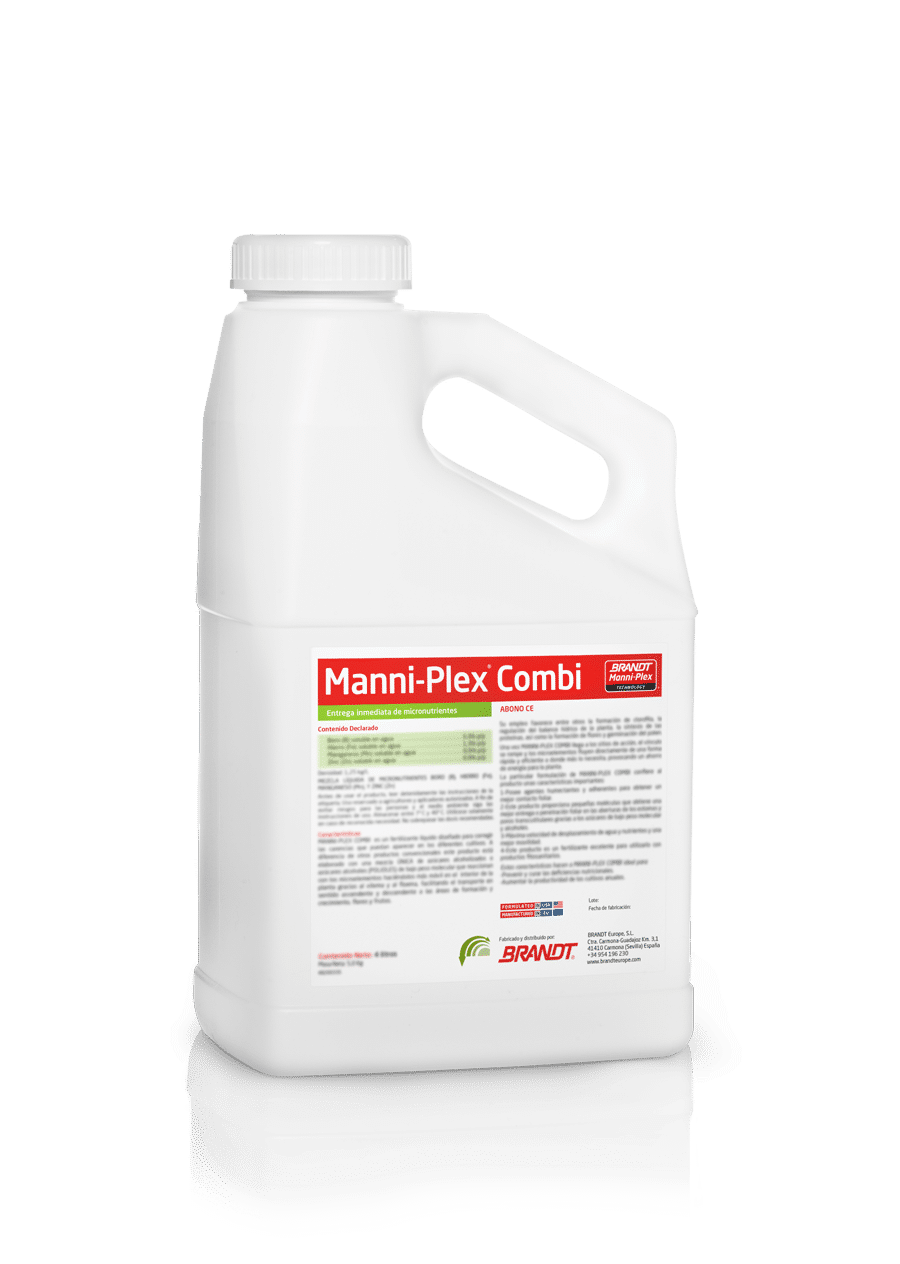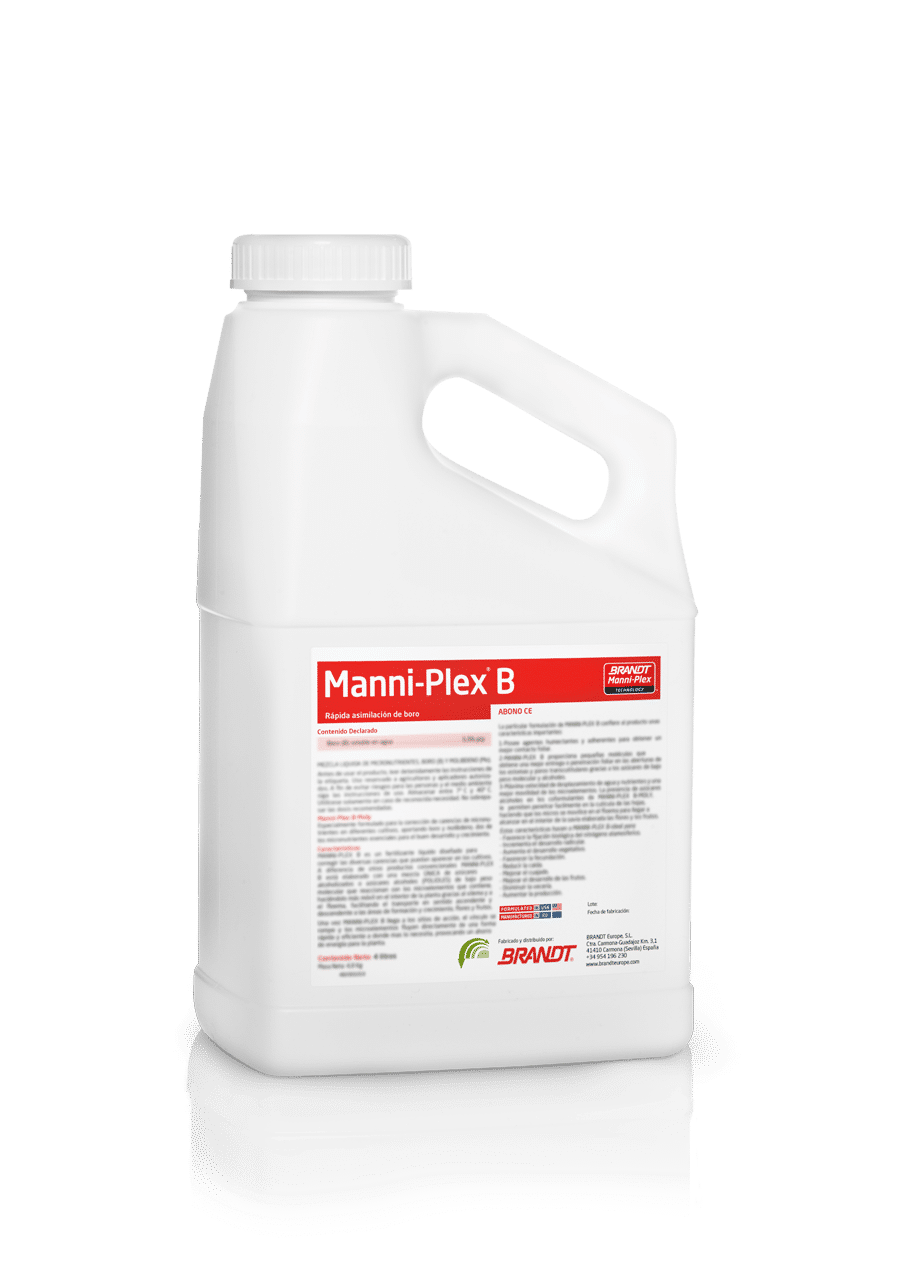BRANDT® Manni-Plex® for Citrus
BRANDT® Manni-Plex for Citrus is a patented foliar supplement that provides highly mobile and available nutrients at the growing points of the plant.
Although formulated specifically for citrus, this product may be used on all field, row, vegetable, fruit, tree, vine and ornamental crops for the prevention and correction of micronutrient deficiencies.
- Advantages
- Crops
- Applications and use
- Composition
- Nutritional Composition
- Sheets
Advantages
- More efficient than other forms of nitrogen, boron, iron, manganese and zinc.
- Low molecular weight, the shape of the particle allows more nutrients to penetrate the leaves of the plants and be transported to the growing points.
- Proprietary formulation coats the leaves and adheres to the leaf surface making longer availability to the plant.
- Can be tank mixed with most fungicides, insecticides and PGRs.
Crops
Applications and use
Field, Row, Vegetable, Fruit, Tree and Vine Crops:
Apply 0.5-1 L/ha per application throughout the growing season. At least 3 applications are recommended. More frequent applications at 3 L/ha may be needed to correct deficiencies once they occur. For pre-plant or sidedress applications, use 2-3 L/ha.
Ornamental Crops:
Apply 0.25-0.5 liters per 100 liters of water. Cover foliage thoroughly to point of runoff.
Optimum rate of application will vary depending on soil properties (such as pH, organic matter content, texture), weather conditions, time of year, general crop health and crop species. For best results, follow soil test or plant analysis recommendation.
Composition
Total Nitrogen (N) . . . . . . . . . . . . . . . . . . . . . . . . . . . . . . . . . . 5.00%
- 2.70% Nitrate nitrogen
- 2.30% Urea nitrogen
Boron (B) . . . . . . . . . . . . . . . . . . . . . . . . . . . . . . . . . . . . . . . . . . 0.25%
- 0.25% Water soluble boron
Iron (Fe) . . . . . . . . . . . . . . . . . . . . . . . . . . . . . . . . . . . . . . . . . . . 1.00%
- 1.00% Water soluble iron
Manganese (Mn) . . . . . . . . . . . . . . . . . . . . . . . . . . . . . . . . . . 2.50%
- 2.50% Water soluble manganese
Zinc (Zn) . . . . . . . . . . . . . . . . . . . . . . . . . . . . . . . . . . . . . . . . . . 2.00%
- 2.00% Water soluble zinc
Derived from urea, iron nitrate, manganese nitrate, zinc nitrate and sodium borate.




